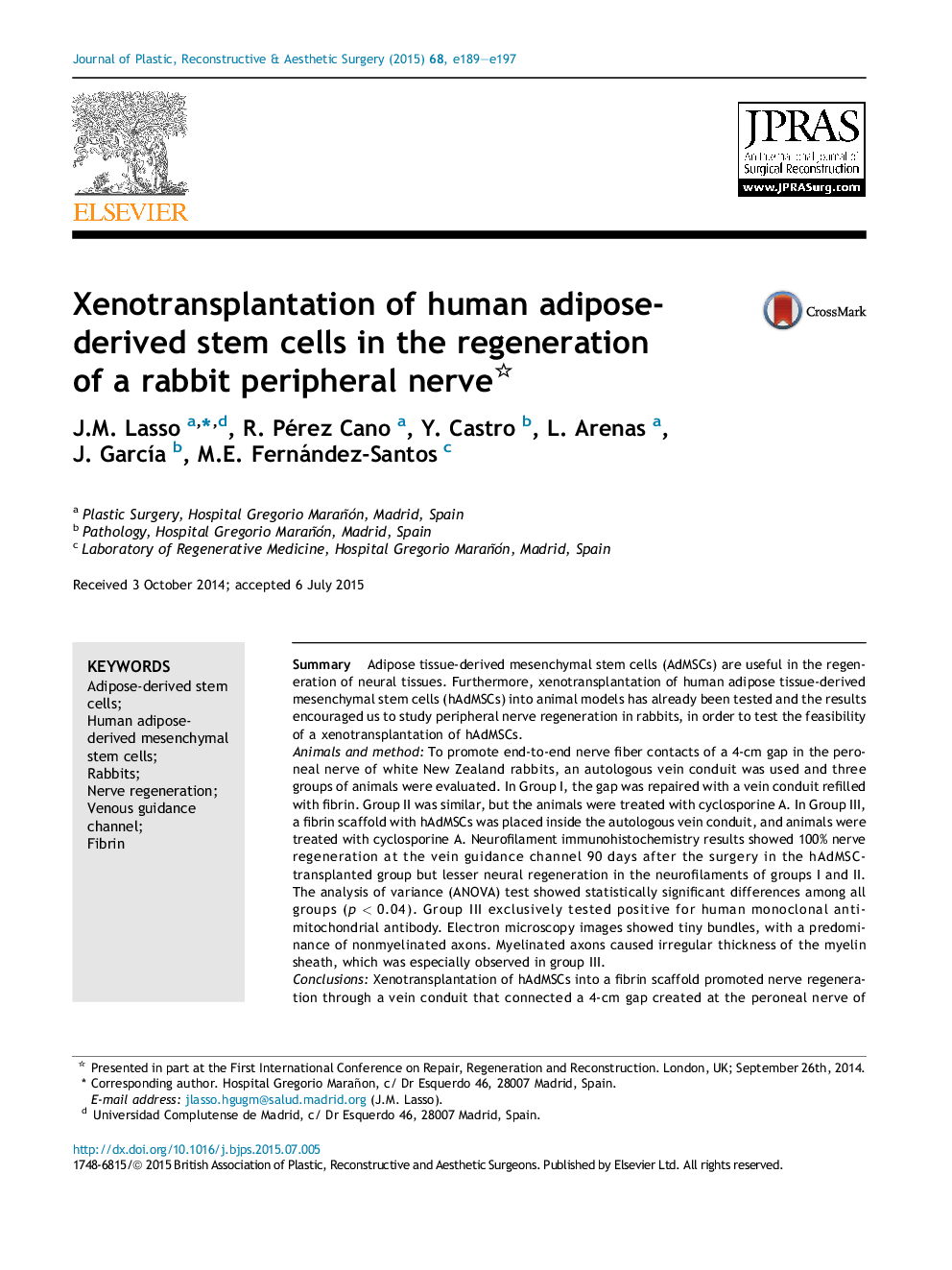| Article ID | Journal | Published Year | Pages | File Type |
|---|---|---|---|---|
| 4117495 | Journal of Plastic, Reconstructive & Aesthetic Surgery | 2015 | 9 Pages |
SummaryAdipose tissue-derived mesenchymal stem cells (AdMSCs) are useful in the regeneration of neural tissues. Furthermore, xenotransplantation of human adipose tissue-derived mesenchymal stem cells (hAdMSCs) into animal models has already been tested and the results encouraged us to study peripheral nerve regeneration in rabbits, in order to test the feasibility of a xenotransplantation of hAdMSCs.Animals and methodTo promote end-to-end nerve fiber contacts of a 4-cm gap in the peroneal nerve of white New Zealand rabbits, an autologous vein conduit was used and three groups of animals were evaluated. In Group I, the gap was repaired with a vein conduit refilled with fibrin. Group II was similar, but the animals were treated with cyclosporine A. In Group III, a fibrin scaffold with hAdMSCs was placed inside the autologous vein conduit, and animals were treated with cyclosporine A. Neurofilament immunohistochemistry results showed 100% nerve regeneration at the vein guidance channel 90 days after the surgery in the hAdMSC-transplanted group but lesser neural regeneration in the neurofilaments of groups I and II. The analysis of variance (ANOVA) test showed statistically significant differences among all groups (p < 0.04). Group III exclusively tested positive for human monoclonal anti-mitochondrial antibody. Electron microscopy images showed tiny bundles, with a predominance of nonmyelinated axons. Myelinated axons caused irregular thickness of the myelin sheath, which was especially observed in group III.ConclusionsXenotransplantation of hAdMSCs into a fibrin scaffold promoted nerve regeneration through a vein conduit that connected a 4-cm gap created at the peroneal nerve of rabbits. Animals treated with hAdMSCs presented negative inflammatory response at the regenerated nerve gaps, but it was demonstrated that hAdMSCs were incorporated to the new nerve creating neural tissue and endothelial cells. However, hAdMSCs required immunosuppression with cyclosporine A to achieve axonal regeneration.
